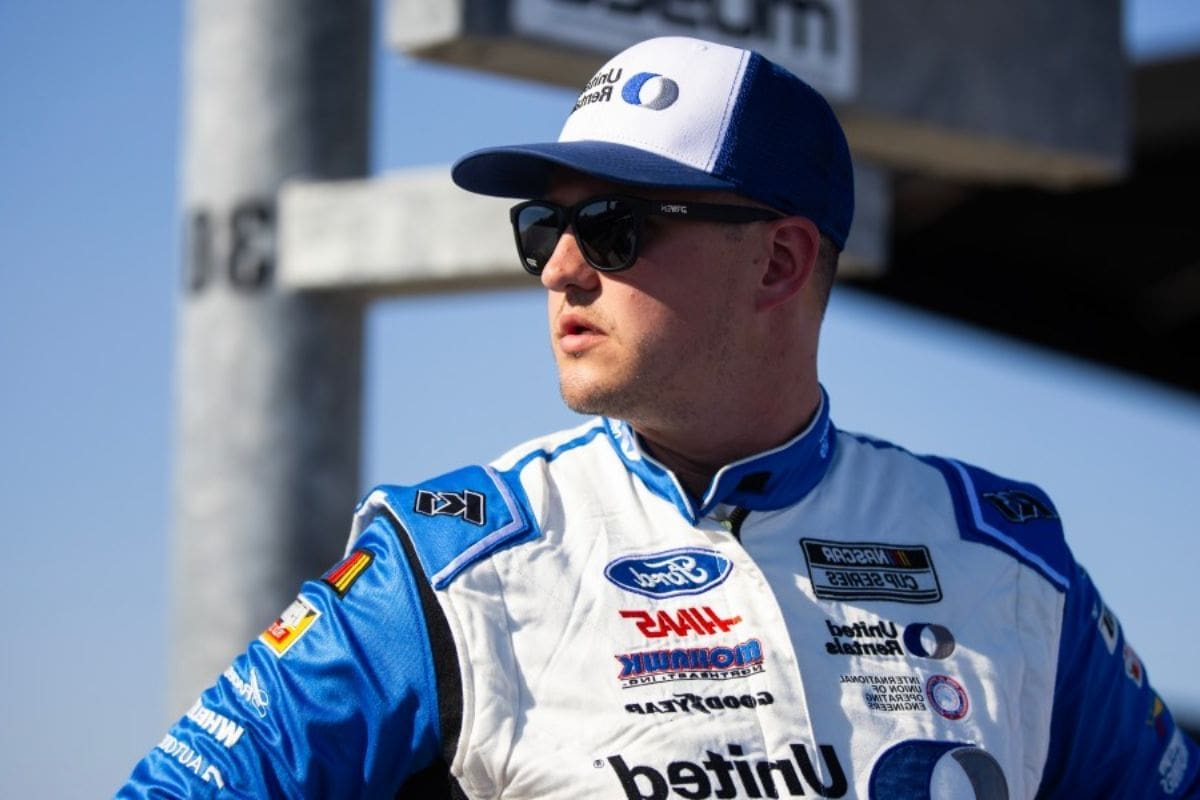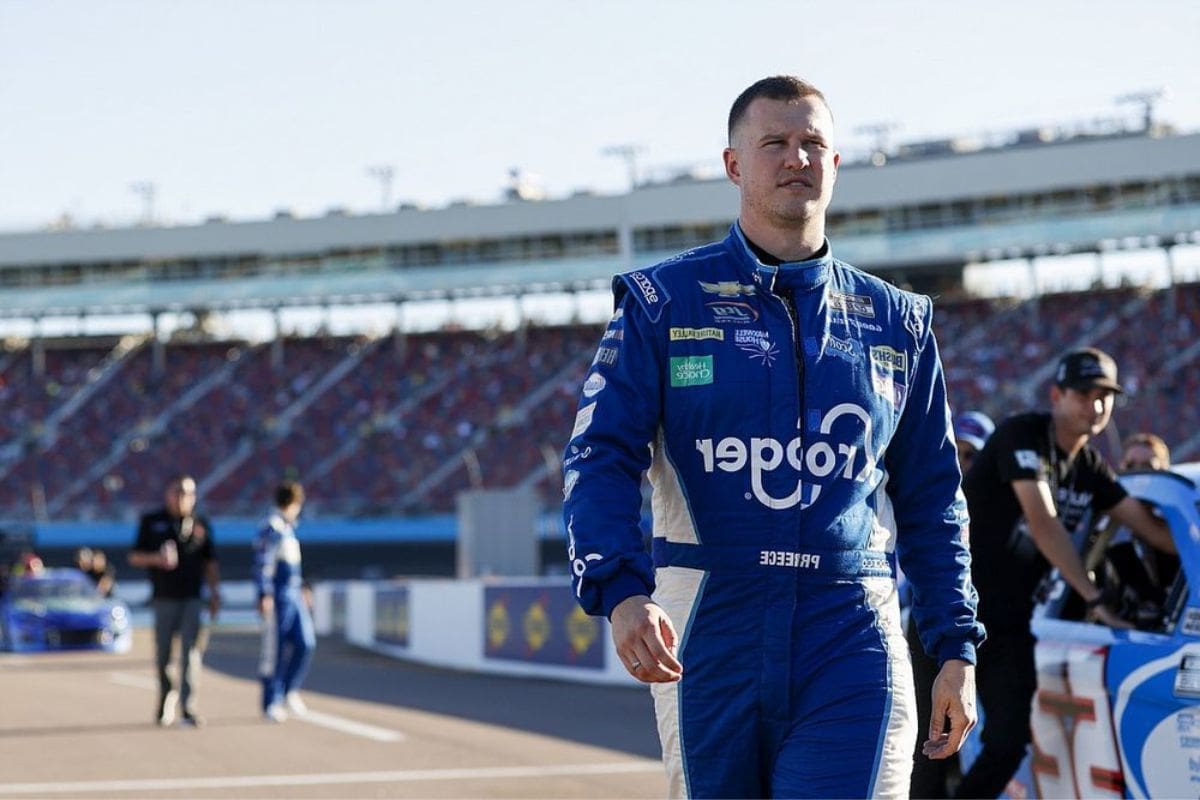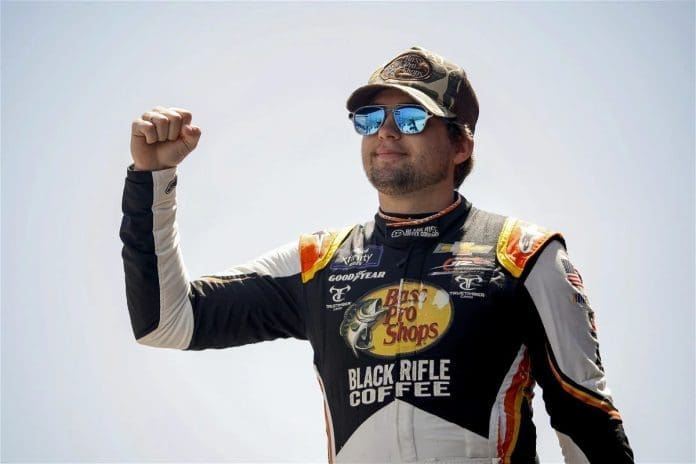Ryan Preece Defends Tony Stewart: In the midst of ongoing speculation regarding potential structural shifts and charter sales at Stewart-Haas Racing (SHR), Ryan Preece has publicly defended Tony Stewart, emphasizing his gratitude and the indispensable leadership provided by SHR. Despite facing performance hurdles and uncertainties about his contract renewal, Preece remains optimistic and underscores the significance of unity within the team. This stance invites further examination of the dynamics at SHR and raises questions about the future trajectory of both the team and NASCAR, suggesting a deeper narrative beneath the surface of these rumors.
Key Takeaways
- Ryan Preece expresses gratitude towards Tony Stewart and SHR leadership despite the ongoing rumors and uncertainties.
- Preece acknowledges the career risks inherent in motorsports and remains appreciative of the opportunities provided by SHR.
- He highlights the importance of team dynamics and improved cohesion within Stewart-Haas Racing.
- Preece recognizes the challenges faced but shows no animosity towards team owners amid performance struggles.
- Despite uncertainty, Preece is optimistic about SHR’s potential resurgence and strategic adjustments for better outcomes.
Stewart-Haas Racing’s Uncertain Future
Amid swirling rumors of charter sales, Stewart-Haas Racing faces an uncertain future that has prompted concern among its drivers. The speculation centers around the potential sale of the team’s charters, a move that could lead to significant structural and operational changes within the organization.
The financial implications of such a sale are considerable. Tony Stewart, co-owner of Stewart-Haas Racing, stands to gain a substantial multi-million dollar windfall if the charters are sold. This potential financial boon contrasts sharply with the drivers’ apprehensions. For them, the sale could mean disruptions to their careers, strategies, and possibly their future with the team. The uncertainty extends beyond the drivers, affecting all levels of the organization, from crew members to administrative staff.
The charter system, designed to secure the financial stability and competitive balance of NASCAR teams, grants guaranteed entry into races and a share of the sport’s revenue distribution. Selling these charters could provide immediate financial relief or strategic reallocation of resources for Stewart-Haas Racing. However, the long-term consequences could destabilize the team’s competitive edge, erode team cohesion, and potentially diminish its standing within the NASCAR community.
Analytically, the decision to sell charters reflects a complex interplay between immediate financial gains and long-term strategic goals. As Stewart-Haas Racing navigates this precarious situation, the broader implications for NASCAR’s competitive landscape remain to be seen.

Ryan Preece’s Perspective
Ryan Preece, reflecting on the potential sale of charters at Stewart-Haas Racing, acknowledges both the risks to his career and the invaluable support he’s received from the team’s leadership. In the face of these uncertainties, Preece remains cognizant of the delicate balance between opportunity and risk within the competitive world of NASCAR. His position, though less prominent than some of his peers, is a proof of the faith shown in him by Tony Stewart and Gene Haas.
“It’s fine. Tony gave me an opportunity, and Gene did.”-(preece)
Preece’s perspective is shaped by several key factors:
- Career Risk: The potential sale of charters could lead to fewer opportunities for Preece, which may ultimately threaten his position within the team.
- Gratitude: Despite these risks, Preece expresses profound gratitude towards the SHR leadership for providing him with a platform to showcase his abilities.
- Team Dynamics: Preece recognizes the importance of nurturing young talent and values the supportive environment fostered by Stewart and Haas.
From an analytical standpoint, Preece’s reflections highlight the inherent volatility in motorsports careers, where the business decisions of a team can have a significant impact on a driver’s trajectory. His acknowledgment of the risks underscores a realistic understanding of the industry, while his gratitude reflects a deep appreciation for the opportunities afforded to him.
"Tony gave me an opportunity and Gene did."
Ryan Preece offers a brief response when asked about his experience with the current structure at Stewart-Haas Racing
📹 @stephen_stumpf pic.twitter.com/HMCbnBnkV4— Frontstretch (@Frontstretch) May 26, 2024
Moreover, Preece’s comments point to a broader narrative within Stewart-Haas Racing, where the team’s commitment to developing drivers is contrasted with the financial and strategic considerations that come with the sale of charters.
Performance Challenges for Ryan Preece
Despite showing promise, Preece’s performance in SHR’s #41 Darkhorse car has struggled to meet expectations, with only one top-ten finish to date. This underperformance can be attributed to a confluence of factors, both internal and external, that have hindered his ability to reach his potential on the track.
Initially, Preece’s absence from key team meetings may have contributed to a lack of cohesion with his crew and a misunderstanding of strategic directives. This disconnection could have impaired the team’s ability to effectively communicate and implement race strategies, ultimately affecting race day performance.
However, it is important to note that Preece holds no animosity towards team owners Tony Stewart and Gene Haas, emphasizing a professional and respectful relationship despite the challenges faced.
Moreover, the pressure of being the least likely driver to secure a contract renewal if SHR decides to sell charters adds another layer of complexity to Preece’s situation. This looming uncertainty can create a psychological burden, potentially affecting his on-track focus and performance.
Additionally, external factors such as the performance of the #41 car itself cannot be overlooked. Mechanical reliability, engineering support, and the overall competitiveness of the vehicle play pivotal roles in a driver’s success. If the car is not performing at its best, even the most skilled driver will struggle to achieve top finishes.

Stewart-Haas Racing’s Potential Resurgence
While Ryan Preece faces notable challenges, Stewart-Haas Racing is witnessing encouraging signs of a potential resurgence, driven by improved team cohesion and promising performances from drivers like Josh Berry and Noah Gragson. Despite initial difficulties in adjusting to the Mustang Darkhorse, these drivers are starting to show progress, which is a positive indicator for the team’s future.
“Everything this year has been better from a standpoint of a team side of things. Not that we weren’t a team before, but we certainly were almost four individual teams than just one organization, and now I feel like we’re trying to really work more as one organization.”-(chase)
Chase Briscoe has highlighted a significant improvement in team cohesion, suggesting a shift towards a more unified organization. This enhanced unity within the team could serve as a catalyst for better comprehensive performance and consistency on the track. A cohesive team can facilitate better communication, strategy execution, and problem-solving, all of which are critical for success in the highly competitive world of NASCAR.
Key factors contributing to Stewart-Haas Racing’s potential resurgence include:
- Improved Team Cohesion: Enhanced collaboration and communication amongst team members are fostering a more unified and effective operation.
- Promising Driver Performances: Josh Berry and Noah Gragson’s adaptation and progress with the Mustang Darkhorse signal potential for future successes.
- Strategic Adjustments: The team’s ability to adapt to new challenges and optimize their strategies is laying the groundwork for a comeback.
Analytically, these developments indicate that Stewart-Haas Racing is not only addressing their current issues but also building a more resilient and competitive structure. If the team can maintain this trajectory, they may very well experience a resurgence that could reestablish them as formidable contenders in NASCAR.
Reflections on NASCAR’s Future
Assessing the current dynamics within Stewart-Haas Racing offers valuable insights into the broader trajectory of NASCAR’s evolving landscape. Despite facing a myriad of challenges, the underlying optimism among SHR drivers regarding the team’s potential resurgence suggests a pivotal moment not just for the team but for NASCAR as a whole.
“There are times in the past when I felt like some of my crew guys maybe didn’t even know other crew guys inside the organization. But now we all kind of hang out. The No. 41 guys, the No. 10 guys, all of us kind of hang out and do different stuff together.”-(chase)
The intricacies of SHR’s situation – with drivers expressing a mix of hope and cautious ambition – mirror the sport’s broader narrative of adaptation and growth amidst uncertainty.
The confidence showed by SHR drivers indicates a belief in the organization’s strategic direction and potential for future success. This optimism, however, raises pertinent questions about the timing of key exits from the sport. Such changes could have a significant impact on NASCAR’s competitive balance and market dynamics.
The ongoing rumors surrounding potential departures within SHR add layers of complexity to an already detailed scenario, further fueling speculation about the sport’s future trajectory.
In the broader context, NASCAR is in a period of transformation, grappling with technological advancements, shifting fan demographics, and evolving business models. The situation at SHR is symbolic of these larger trends. Teams are increasingly required to innovate and adapt swiftly to maintain competitiveness and relevance.
As SHR seeks to refine its strategies and bolster its performance, the team’s evolution will likely serve as a microcosm of NASCAR’s overall adaptation process.
Ultimately, the reflections on SHR’s current state underscore a critical juncture for NASCAR. The sport’s future hinges on its ability to navigate these complex dynamics, fostering an environment where both legacy teams and emerging entities can thrive amidst a constantly changing landscape.

News in Brief: Ryan Preece Defends Tony Stewart
Stewart-Haas Racing’s uncertain future, combined with performance challenges, has created a complex environment for the team. Ryan Preece’s defense of Tony Stewart underscores the importance of unity and support within the organization.
Despite not meeting performance expectations and facing contract uncertainties, Preece’s positive outlook serves as a reminder of the resilience required in competitive sports.
The potential for a resurgence remains, contingent upon strategic adjustments and continued cohesion within the team.
Also Read: Ryan Preece’s Backdoor Meet Exclusion Sparks Fans Speculation

